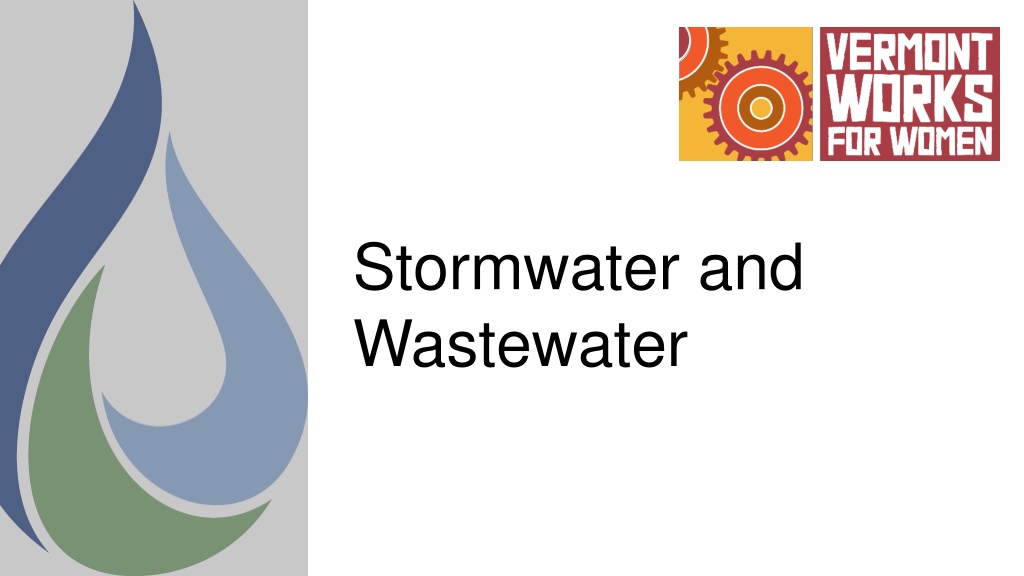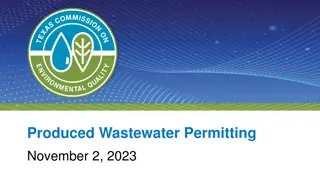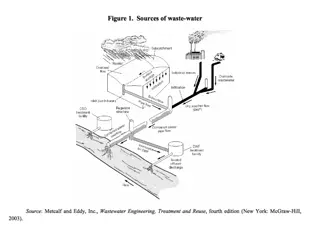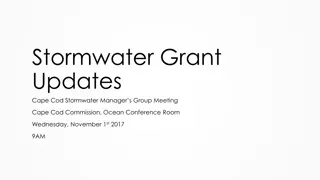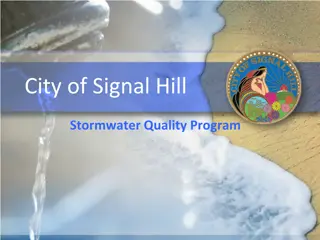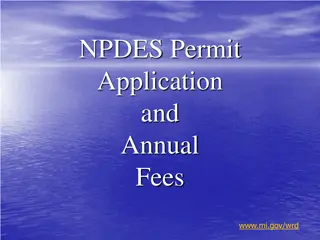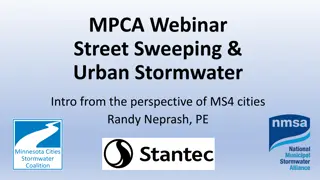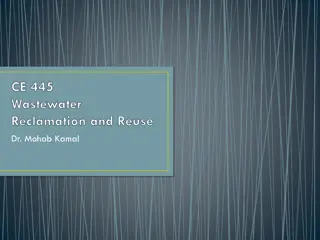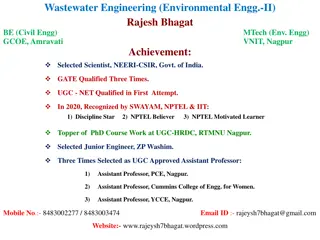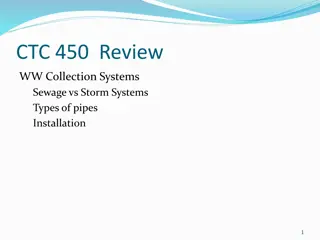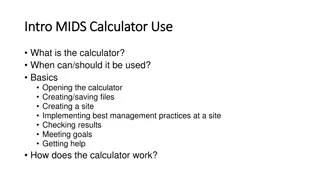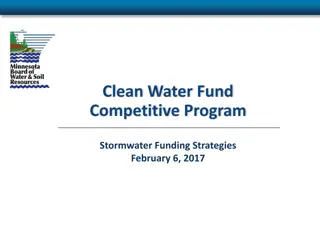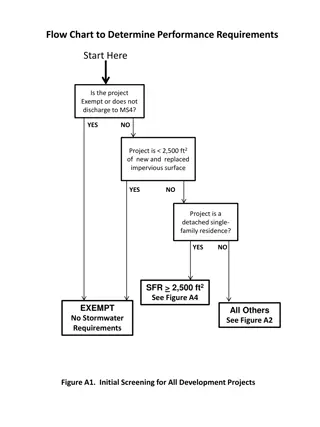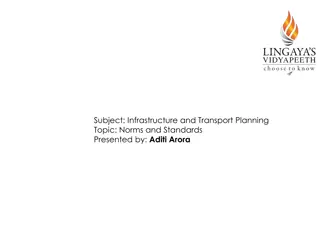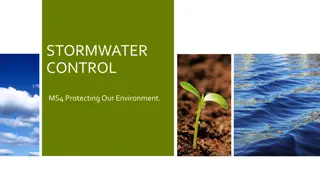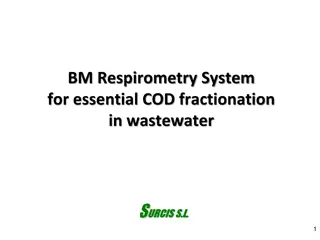Stormwater and Wastewater
Stormwater is precipitation that falls on land and can lead to harmful runoff, carrying pollutants to waterways. Wastewater is used water containing various substances, necessitating treatment before returning it to the environment. Learn about managing stormwater and proper wastewater disposal practices to protect ecosystems and water quality.
Download Presentation

Please find below an Image/Link to download the presentation.
The content on the website is provided AS IS for your information and personal use only. It may not be sold, licensed, or shared on other websites without obtaining consent from the author.If you encounter any issues during the download, it is possible that the publisher has removed the file from their server.
You are allowed to download the files provided on this website for personal or commercial use, subject to the condition that they are used lawfully. All files are the property of their respective owners.
The content on the website is provided AS IS for your information and personal use only. It may not be sold, licensed, or shared on other websites without obtaining consent from the author.
E N D
Presentation Transcript
Stormwater and Wastewater
What is Stormwater? Precipitation (rain, snow, etc.) that falls on land will either be absorbed by plants, soak into the soil, evaporate, or become stormwater runoff. Image: https://dec.vermont.gov/watershed/stormwater
Stormwater Runoff Paved surfaces like roads, parking lots and roofs do not allow water to soak into the ground. Instead, water flows through stormdrains to waterways or retention ponds Runoff can pick up pollutants and carry them to rivers and lakes, harming aquatic ecosystems and polluting drinking water. What pollutants can runoff carry? What are some ways we can reduce stormwater runoff? https://www.lcbp.org/water-environment/water-quality/stormwater/
Manage Stormwater Keep stormwater drains clear of leaves and litter Pick up pet waste Repair leaks and drips from your vehicle Don t pour anything into storm drains, including paints, solvents, cleaners, etc. Minimize the use of herbicides and pesticides Use a rain barrel and plant a rain garden! https://stormwater.wef.org/2015/05/stormy-awards-elevate-new- england-stormwater-efforts/rsep_spring_2014_print_ads_page_2/
What is Wastewater? Wastewater is used water that goes down the drain. It may contain human waste, food scraps, oils, soaps, and chemicals. In homes, wastewater comes from sinks, showers, bathtubs, toilets, washing machines, and dishwashers Businesses like food production and manufacturing also release wastewater https://www.youtube.com/watch?v=Y3-P_Lm36K8
Wastewater Treatment Steps: 1. Remove solids 2. Remove pollutants and nutrients 3. Disinfect 4. Return water to river, lake, or groundwater Watch the wastewater treatment process in South Burlington https://www.youtube.com/watch?v=Y3-P_Lm36K8
Never put these down the sink or toilet: Fats, oils or grease Food scraps Trash Menstrual products or diapers Paper towels or tissues Wipes, even ones labeled Flushable! https://tataandhoward.com/please-do-not-flush/
Check out the activity and video guide for opportunities to deepen your learning! These educational materials were created through a partnership between Vermont Works for Women and the Vermont Rural Water Association to support water education for Vermont s students. Vermont Rural Water Association Clean Water for Vermont Communities.
